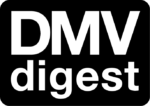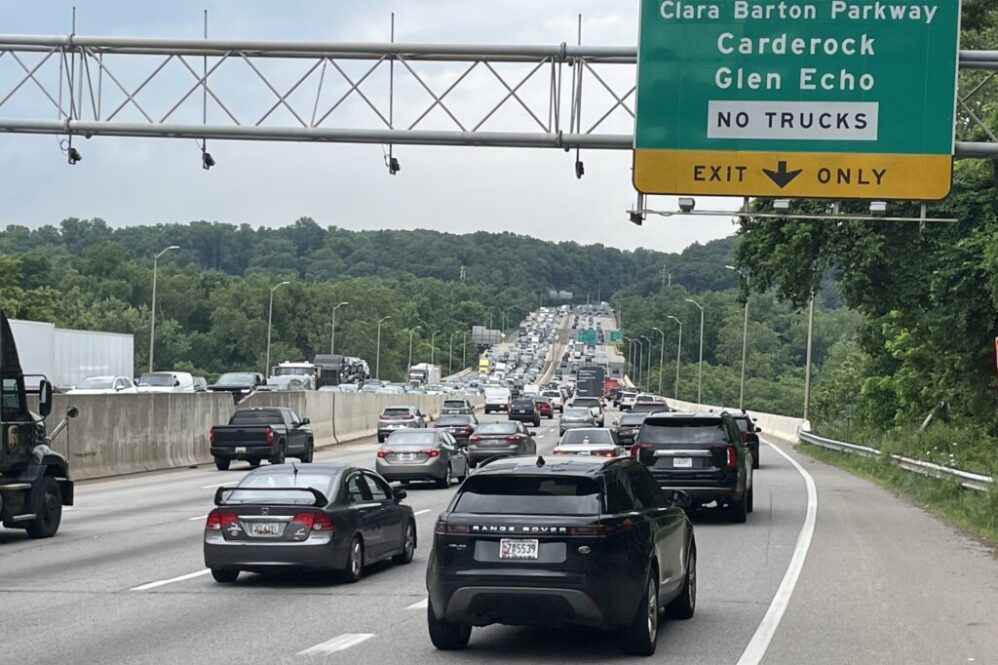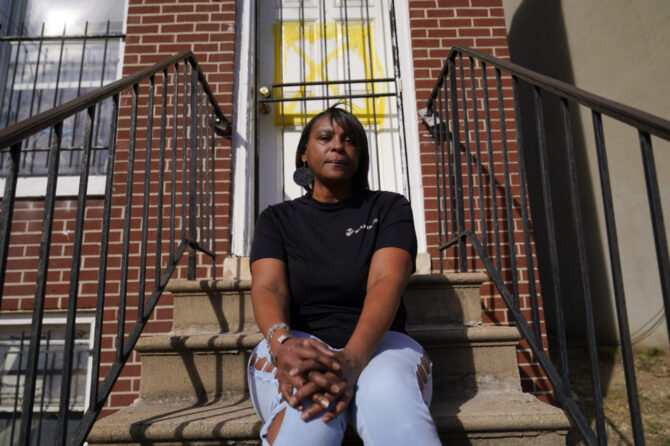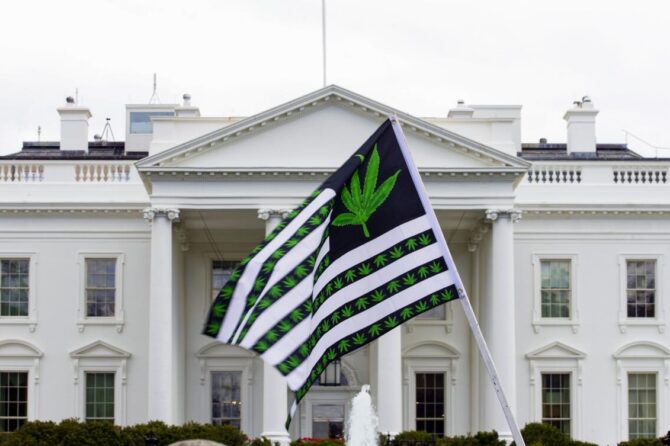Montgomery County Executive Marc Elrich wants the U.S. Department of Transportation to delay for at least 60 days a final decision on Maryland’s plan to add toll lanes to the Capital Beltway and Interstate 270.
In a letter to Transportation Secretary Pete Buttigieg, Elrich (D) urged the federal government not to render its final verdict on the proposal until the public has had an “adequate” opportunity to review a new — and voluminous — environmental analysis.
The executive also wants U.S. DOT to require the Maryland Department of Transportation to respond to “all substantive issues” that have been raised by the public, and to do so “in a meaningful and constructive way” before giving the project the green light.
“The [Final Environmental Impact Statement (FEIS)] and appendices total 26,500 pages in 74 separate files, and it was released on June 17 for 30-day review,” Elrich wrote. “This is an enormous amount of information to review in a short time period.”
Elrich has been a persistent critic of Gov. Lawrence J. Hogan Jr.’s plan to rebuild the American Legion Bridge and add variably priced toll lanes to portions of Interstates 495 and 270. Business organizations have praised Hogan (R) for putting forward a plan to relieve some of the nation’s worst traffic spots. Project backers note that the state has made commitments to expand transit that weren’t part of the project when Hogan unveiled it in 2017.
But community organizations have formed to fight the project and environmental groups have raised numerous objections.
The feds are expected to let the state know whether it can proceed with the project on Aug. 5.
In a letter to Gregory Murrill, a top Federal Highway Administration official, Montgomery County state legislators also sought a delay, because “much of the material (in the FEIS) is new.” The delegation asked that the public be given until Sept. 17 to review and comment upon the federally mandated environmental, public health and traffic analyses.
Lawmakers also noted that MDOT has acknowledged changing its approach to traffic modeling during the long period between the draft environmental statement and the final version.
“The Department chose to defer the release of federally mandated analyses and other missing information until issuance of the FEIS,” lawmakers wrote. “As a result, the public, its representatives, and reviewing agencies can only now begin examining long-requested environmental justice and greenhouse gas emissions analyses, mitigation plans, the project’s recently changed traffic model, and MDOT’s responses to the 5,000 comments it received during the public comment periods for the Draft EIS and Supplemental Draft EIS.”
Environmental groups seek delay
Critics of the Hogan plan say the state shifted its methodology for determining how the toll lanes would impact commute times — without an explanation as to what changes were made. They also complained that State Highway Administration officials would only make modeling data available if the the group submitted a check for $21,975.81 ahead of time.
In a July 18 letter to the Federal Highway Administration and MDOT, a coalition of civic organizations said the project “must not move forward” until “less harmful and costly alternatives” have been evaluated. The groups wrote that the state’s review of the toll lanes plan “seemed designed to reach a pre-determined result.”
In a review of the FEIS commissioned by the Sierra Club, Norman Marshall, head of the traffic analysis firm Smart Mobility, took issue with the methodology used by the State Highway Administration.
“Some of the most fundamental rules about modeling appear to have been ignored…,” Marshall wrote, rattling off a dense list of what he said were flaws. “Furthermore, generic reference to ‘design updates and the forecasting refinements’ cannot explain the magnitude of change in the numbers between [draft] and [the final report].
Even without all the data, Marshall said “it is possible to detect serious errors that appear to invalidate the model outputs.”
“Those outputs, some of them illogical, appear to overstate travel time savings and inadequately capture congestion, gridlock conditions, and bottlenecks,” he added.
State transportation officials have acknowledged making changes in their modeling, saying they did so in response to public comments. They did not elaborate.
Marshall also claimed that the state altered modeling parameters “in order to make the modeled traffic metrics look better than they did” in the first report. Marshall’s resume boasts 34 years of experience in transportation modeling and planning.
Earlier this month, project critic Ben Ross, head of the Maryland Transit Opportunities Coalition, urged U.S. DOT to order an independent review of unexplained changes in the state’s analysis to rule out possible “scientific fraud.”
The Sierra Club and other opponents of the toll lanes plan expressed anger at MDOT’s decision to “password protect” the FEIS, a move that makes it impossible for citizens and journalists to copy and paste portions of the document.
In a letter to Andrew Gallant, a Rockville resident, project manager Jeffrey Folden defended the decision. Folden said restricting cut-and-paste “offers graphic integrity and preserves intended content and layout….”
Environmental reports are “official documents for which the integrity of the content needs to be protected.”
This article was written by Maryland Matters, read more articles like this here.
Photo:Traffic along the inner-loop of the Capital Beltway at the American Legion Bridge. Photo by Bruce DePuyt.










